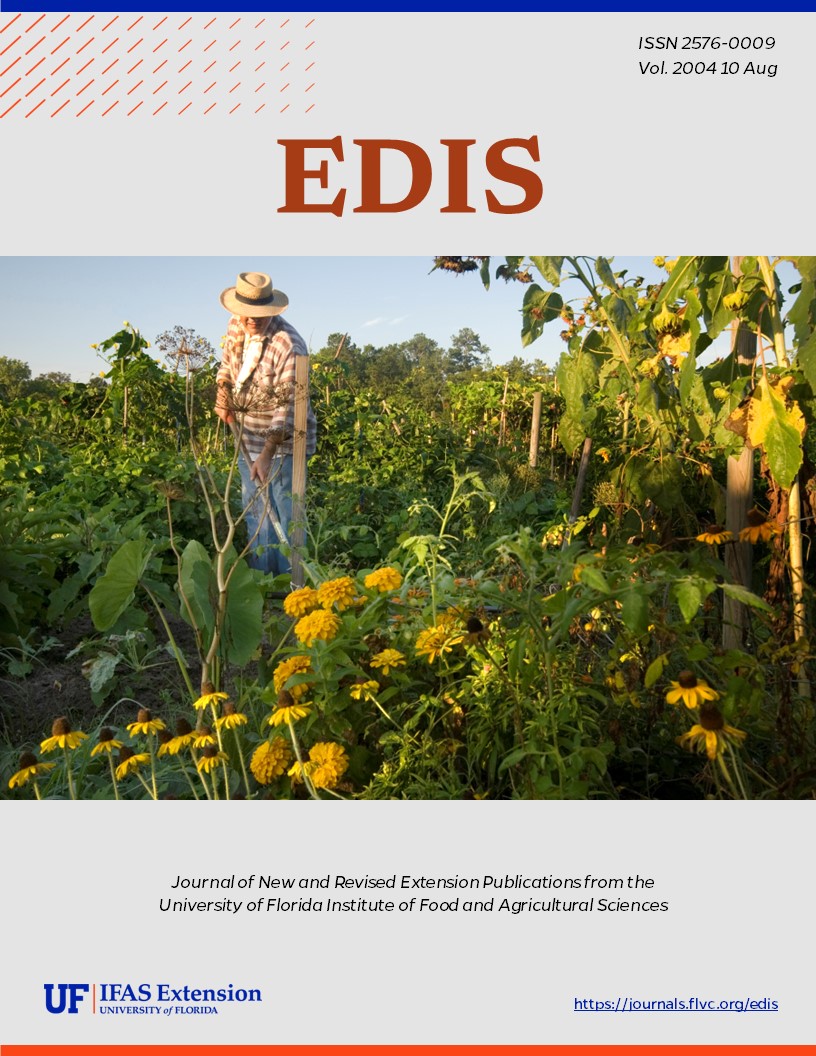Abstract
The organic vegetable industry is flourishing due to consumers preference for organically grown produce over traditionally produced vegetables. As a result, an increase in the variety and selection of many vegetables in retail supermarkets and restaurants throughout the United States has occurred recently. With the new regulation (October 2000) requiring organic seed sources for organically labeled vegetables, many organic growers are searching for certified organic seed. Smaller seed companies have produced the majority of organically produced seed to date. The commercial seed sector is starting to provide a more diverse selection of cultivars, yet there are still many hybrids that are not yet available. For growers in Florida, there is opportunity to produce organic, though it is not widely practiced. This report serves as a guide to organic seed production in Florida. This document is HS981, one of a series of the Department of Horticultural Sciences, Florida Cooperative Extension Service, Institute of Food and Agricultural Sciences, University of Florida. Original publication date: July 2004.
References
George, R.T. 1999. Vegetable Seed Production Second Edition. Longman Press, Essex.
Hawthorn, L.R., Pollard, L. 1954. Vegetable and Flower Seed Production. The Blackiston Company, New York. https://doi.org/10.1097/00010694-195404000-00016
Hoffmann, M.P. and Frodsham, A.C. 1993. Natural Enemies of Vegetable Insect Pests, http://www.nysaes.cornell.edu/ent/biocontrol/manual.html. Cooperative Extension, Cornell University, Ithaca, NY. http://www.nysaes.cornell.edu/ent/biocontrol/info/biocont.html
Kirschenbaum, J. 2000. Saving Your Own Garden Seed. The Year Round Gardener. Terrestrial Seed Company. http://www.territorial-seed.com/news/aug00/aug00.html
McDonald, M., Copeland, L. 1997. Seed Production Principles and Practices. International Thomson Publishing. https://doi.org/10.1007/978-1-4615-4074-8_20
NATURECOAT - Harris Morans New "Organic" Seed Pellet for Carrots, Lettuce, Onions, & Miscellaneous Species. 2004. Harris Moran. Modesto, CA. http://www.harrismoran.com/technology/naturecoat.htm
Peet, M. 2002. Practices and Materials Permitted in Some Organic Certification Programs. http://www.cals.ncsu.edu/sustainable/peet/IPM/diseases/org_cert.html
Simonne, E., Hochmuth, G. 2001. Soil and Fertilizer Management for Vegetable Production in Florida. UF/IFAS Coop. Ext. Serv., HS711. http://edis.ifas.ufl.edu/CV101
Vavrina, C.S. 1995. Seed Quality and Seeding Technology. UF/IFAS Coop. Ext. Serv., HS713. http://edis.ifas.ufl.edu/CV103
Vegetable Seed Production. Department of Horticulture and Crop Science. Ohio State University. http://www.ag.ohio-state.edu/~seedsci/vspo2.html
White, J.M 1995. Organic Vegetable Production. UF/IFAS Coop. Ext. Serv., HS720. http://edis.ifas.ufl.edu/CV118
Unless otherwise specified, articles published in the EDIS journal after January 1, 2024 are licensed under a Creative Commons Attribution-NonCommercial-NoDerivs 4.0 International (CC BY-NC-ND 4.0) license.

